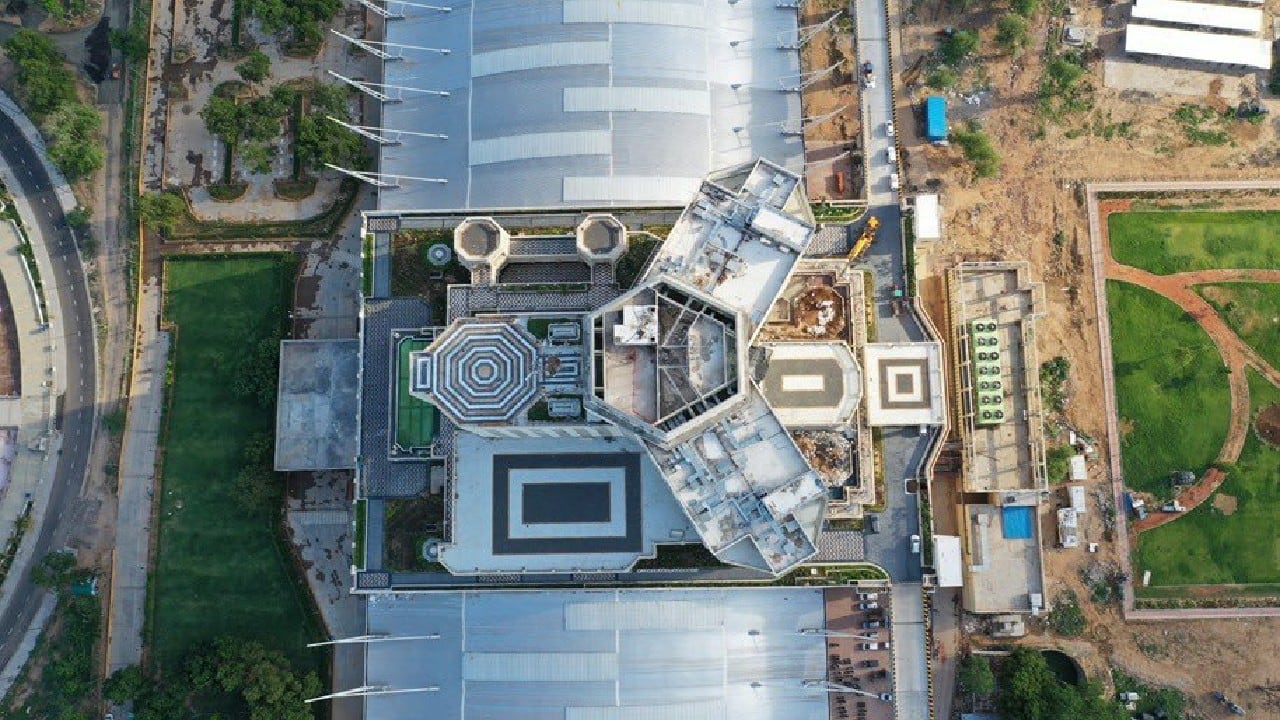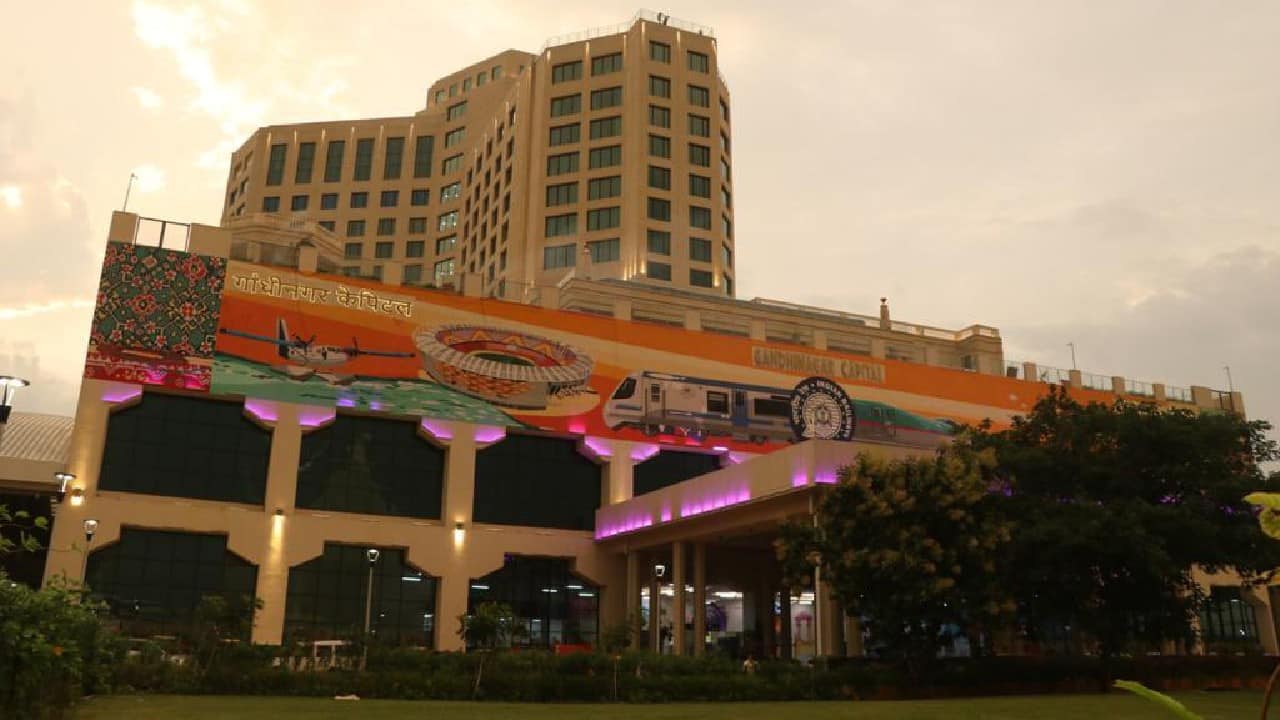



With Prime Minister Narendra Modi inaugurating Gandhinagar Capital Railway Station on July 16, the first showpiece of the Indian Railways’ mega station redevelopment programme becomes operational. The focus now shifts to other projects slated for a revamp.
The Indian Railways plans to initially redevelop 123 stations across its network, investing more than Rs 50,000 crore. Unlike the Gandhinagar station, which was redeveloped through a joint venture between the Gujarat government and the Indian Railway Stations Development Corporation (IRSDC), most of the other stations will be rebuilt in partnership with private companies.
An official said IRSDC is working on 63 stations, the Rail Land Development Authority is working on 60 other stations and two are being redeveloped by their respective state governments.
“Most of these 123 stations will be redeveloped under the public-private partnership mode. Exceptions have been made for specific reasons – in Bhubaneshwar, for example, the state government got involved because an adjacent bus terminal had to be integrated,” the official said. “In Gandhinagar, the convention centre and other factors came into play. The preferred mode for a majority of other identified stations will be PPP.”
The involvement of private companies is not restricted to station redevelopment – the railways recently opened up select congested routes to the private sector to operate trains.
Gandhinagar station
The Indian Railways has called Gandhinagar station “future ready.” The concourse is expected to house retail, food and entertainment outlets, functioning as a city centre mall. A 318-room, 5-star hotel has come up above the railway station. Other facilities include disabled-friendly lifts and ramps and a large, air-conditioned multipurpose waiting hall.
Railway Board chairman and CEO Suneet Sharma highlighted the changeable “theme facade lighting” as a first for any station in India. Excluding the concourse, the redeveloped station has been designed to handle 1,500 passengers in peak hours.
The project was executed by Gandhinagar Railway and Urban Development Corporation (GARUD), a 74:26 special purpose vehicle formed between the state government and IRSDC. GARUD’s latest annual report showed that the project was delayed and costs, including the luxury hotel, had escalated.
 Image: Twitter/@RailMinIndia
Image: Twitter/@RailMinIndia
“The company has adopted a system to monitor the execution of construction of hotel works and has been properly accounted for in the books. However, the project (cost) has increased from Rs 243 crore to Rs 750 crore,” the auditor noted.
PPP stations
According to the official cited earlier, redeveloping stations initially included the development of tracks and signalling along with the station areas through private participation. While this holistic approach was followed by other countries including China, it brought its own set of problems.
“One, such holistic redevelopment would necessarily involve disruption of train services for long periods of time at busy stations and this was not acceptable. Two, the earlier plan would have meant much large investment from private parties without commensurate viability prospects and that would have dimmed interest in the entire scheme,” the official said. “The plan to offer station area, tracks and signalling all bundled into one were then abandoned. We have now looked for innovative ways to enhance passenger facilitation at busy stations.”
 Passenger amenities at the revamped Gandhinagar Capital railway station (Image: Twitter/@RailMinIndia)
Passenger amenities at the revamped Gandhinagar Capital railway station (Image: Twitter/@RailMinIndia)
Other significant changes were incorporated recently to make the project more attractive to private parties. IRSDC chairman SK Lohia said earlier that leases are now being offered for up to 99 years and mixed land-use and multiple sub-leases are permitted.
To address concerns over delays in getting myriad clearances, a single-window system was put in place. No change of land-use was required pan-India. Also, railway station development projects now do not need prior clearance from the ministry of environment and forests. They have been given infrastructure status and IRSDC has been allowed to adopt any mode of development – PPP, engineering, procurement and construction, or a combination of both.
 Image: Twitter/@RailMinIndia
Image: Twitter/@RailMinIndia
Status of redevelopment
So far, various agencies tasked with station redevelopment have floated requests for qualification for 14 stations, including Chhatrapati Shivaji Maharaj Terminus in Mumbai and New Delhi Railway Station. In both cases, multiple bidders have qualified. However, requests for proposals are stuck because the concession agreements need to incorporate the user-fee component, which is yet to be decided.
In the past, railway officials had said that redeveloped stations will require passengers to shell out a nominal fee for improved facilities like parking, AC waiting rooms, escalators and general upkeep. A decision on the quantum of the fee lies with the Union Cabinet. Railway officials have indicated that a decision could come soon. They explained that the fee will be a fixed amount, unlike the user development fee charged at airports, which varies according to distance travelled.
In Pictures | PM Narendra Modi to inaugurate India’s first 5-star hotel atop railway track at Gandhinagar railway station
Discover the latest Business News, Sensex, and Nifty updates. Obtain Personal Finance insights, tax queries, and expert opinions on Moneycontrol or download the Moneycontrol App to stay updated!
Find the best of Al News in one place, specially curated for you every weekend.
Stay on top of the latest tech trends and biggest startup news.